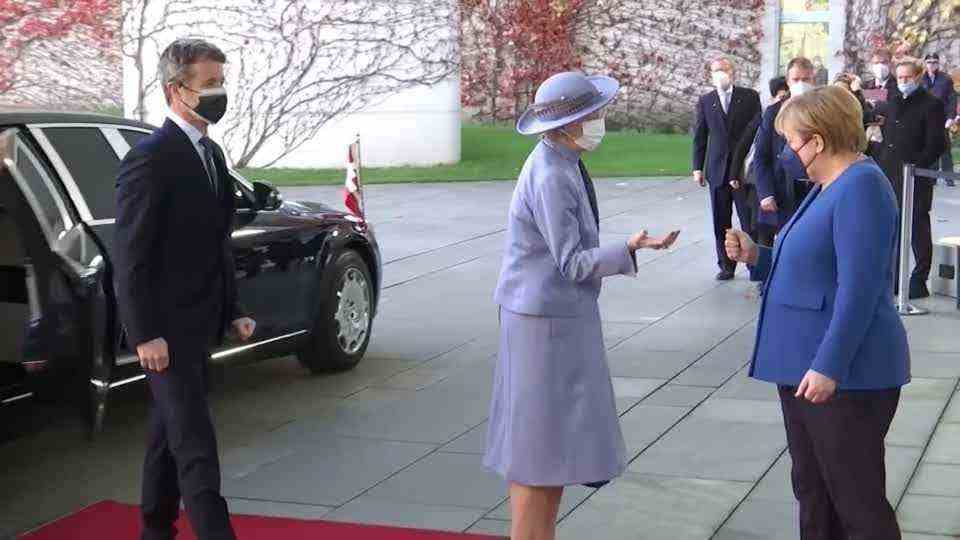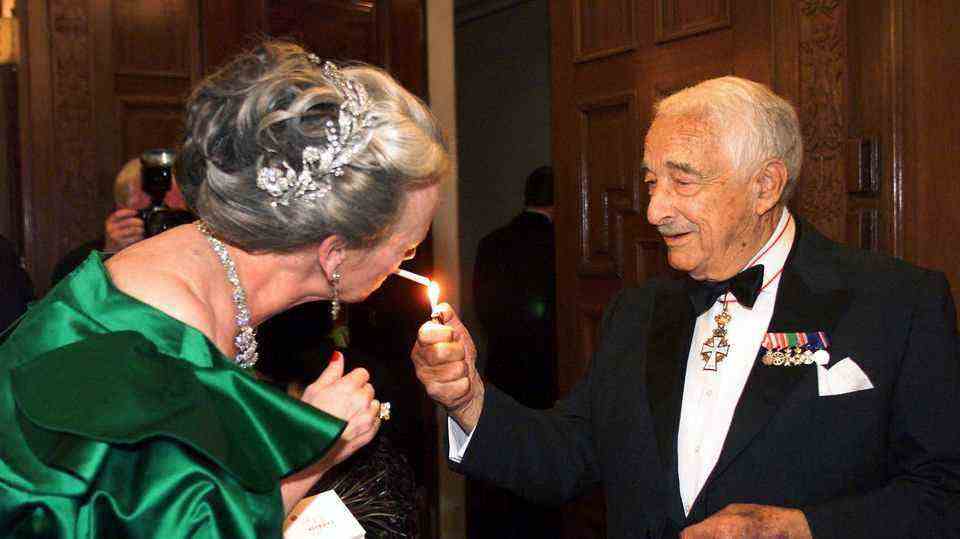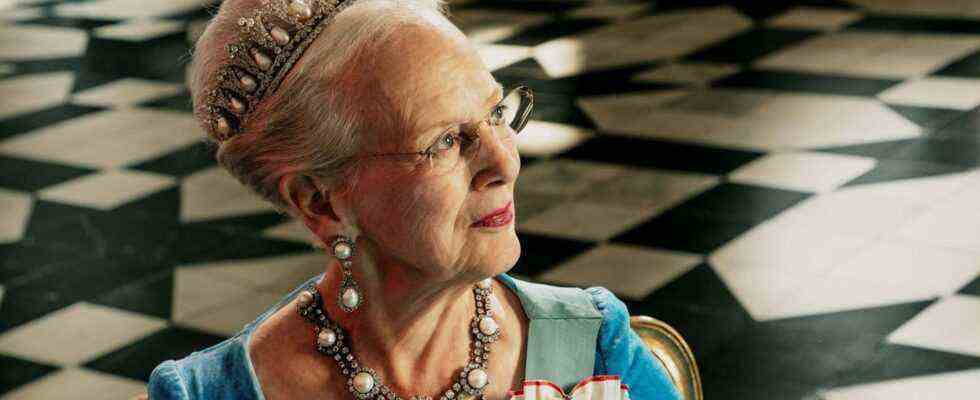On January 14, 1972, Margrethe II took over the throne from her father. In the 50 years since then she has accompanied Denmark through good and bad times – and has also experienced a lot herself and had to endure a lot. About a regent who ran a country in a slightly different way.
“It’s hard for me to understand where these many years have gone. I think it’s gone so quickly.” This is how Denmark’s Queen Margrethe II looked in her New Year’s speech on New Year’s Eve on the past 50 years of her reign. On January 14, 1972, at the age of 31, she took over the throne from the late King Frederik IX, still in mourning for her father. Much has changed in this half century. “But not the love for my neighbors. And not my love for this country.”
Actually it should golden jubilee be duly celebrated over several days. But the corona pandemic is also throwing a big spanner in the works here. But the virus “is not given permission to determine,” emphasized the 81-year-old. “The celebrations will come later in the year when the time is right,” she promises her people. In the late summer it should be so far.
The succession had to be changed for Margrethe
For the Danes, the Queen, the anniversary celebrations and royalty are of exceptional importance. This is sometimes foreign to Germans and seems old-fashioned. Jakob Steen Olsen, aristocratic expert at the Danish newspaper Berlingske, explains star: “If you have a queen who has ancestors for a thousand years, then it is also a constant in society. In this way, the royal family is a kind of historical anchor for the Danish people, a rallying point that points back to Danish history and who we are and where we come from.”
April 16, 1940 sees the future Queen of Denmark as Margrethe Alexandrine Þórhildur Ingrid the light of day. At that time, however, she was barred from becoming queen. The law of succession, according to which there could only be male heirs to the throne, had yet to be changed. On March 27, 1953, a legal reform paved the way for her. Full equality in succession was introduced in 2009. This means that the eldest child of the regent – regardless of gender – inherits the throne, as is already the case in several other European monarchies.
In October 1966, the then-Crown Princess and Henri Marie Jean André Count of Laborde de Monpezat announced their engagement. As she revealed in the book “Enegænger”, Henri was the first man she had a real “date” with. The wedding followed on June 10, 1967. The Count became Prince Henrik. The couple had two children: Crown Prince Frederik and Prince Joachim.
The husband causes trouble
However, Prince Consort Henrik caused a stir from time to time. For example, he never made a secret of his frustration at never having been made king. He felt “demoted” to third place, behind his own son. In the year 2002 he therefore retired to France for a “pause for thought”. But in the end Margrethe was able to avert the crisis. His view of upbringing also caused a stir: “Children are like dogs and horses. You have to train them,” he once said.
In return for his father’s “dressage” saying, Prince Frederik said on his parents’ silver wedding anniversary in 1992: “Dad, it is said that you punish the one you love. We never doubted your love! Sometimes it was something overwhelming.”
At the end of 2015, Margrethe announced her husband’s withdrawal from his official duties. In February 2018, her beloved husband died at the age of 83 after being diagnosed with dementia and a lung condition.

Another small crisis also caused Statements by Frederik on the upbringing of his parents. In 2009 he told US magazine “Parade”, he hardly had anything to do with his parents until his 21st birthday. He was raised by nannies. In the past, Frederik complained once or twice about a loveless childhood. looking back Margrethe admitted that she saw herself as an absent, impatient and generally inadequate mother who had little use for small children. Today the relationship between Margrethe and her children is much better.
The scandal-free Danish royal family
Larger scandals, such as in Great Britain (“Megxit”, Prince Andrew, Charles, Diana and Camilla) or in Spain (Juan Carlos and the alleged money laundering), have not materialized in Denmark. Margrethe II made sure of that with her dutiful manner, which she also passed on to the younger generations.
“She has understood that a very special destiny rests on her shoulders. That means that it is first and foremost a duty that she must live up to. This sense of duty is deeply embedded in her, she carries it in everything she does did,” says Olsen.
What some might see critically: Margrethe is a passionate smoker, but this tends to cause a stir, especially abroad. The Danes have always known their country’s mother to smoke – but this does not detract from her popularity. In 1957 she lit a cigarette for the first time, as she did in the new Biography “On the Road” betrayed by Tom Buk-Swienty. It was their parents who made them do it. “My father and mother had smoked during my childhood and one day they asked me if I wanted a cigarette.” Since 2006, however, Margrethe has refrained from lighting a cigarette in public.

Even when she is older, Margrethe does not want to give up her cigarettes. Here, in November 1999, she allows herself to be lighted by the Danish-American pianist and comedian Victor Borge in New York.
© Band Photo/ / Picture Alliance
Margrethe, the artist
Even if Margrethe II as head of state in her more representative role does not actually express any political views in the constitutional monarchy, she occasionally acts as a reminder. In 1984, she reprimanded her compatriots for “stupid remarks” and “coldness” towards immigrants. When Denmark won the European Football Championship in 1992, she warned in her New Year’s speech that such a victory also harbored the risk of divisive nationalism. In her recent New Year’s speech, she commented on the corona pandemic and climate change. However, it is common for the government to ask them to mention certain topical issues in their speeches.
Despite her advanced age of 81, Margrethe is still very active and goes on many trips abroad, such as to Germany in November last year. A special passion: the art. Since the 1970s, the Queen has engaged in numerous forms of artistic expression, including painting, watercolours, graphics, book illustrations and embroidery. Most of these works are shown in museums in Denmark and abroad. He designed costumes and set designs for numerous plays and television series. She even illustrated a 2002 re-edition of JRR Tolkien’s classic The Lord of the Rings.
For the mother of the country, art is something in which she can immerse herself and where she can be herself, something to relax, says Olsen. “But it’s also something that gives her respect and personality, which the Danes really like. It’s something we’re proud of. Others don’t have that. So that’s how we feel our Queen is special.”
A native mother of the people
With her reliable, pragmatic and sometimes unconventional manner, Margrethe II modernized the Danish monarchy. “She understood that a royal house becomes irrelevant when you don’t feel that it is up to the times. It has to change as we change. The Queen has first and foremost opened up the royal house more than it used to be.” , explains Olsen. She had come closer to her people – and that’s how the people perceive it.
There still has to be a certain distance, according to the expert, who compares this balancing act with a butterfly: “If you touch the wings, the butterfly dust disappears and it can no longer fly.” There must be a form of mysticism around the royal family. “The Queen has signaled very well that she is the sovereign, something special.”
For this reason, it continues to enjoy great popularity among the population. “I think if we introduce the republic now and there are presidential elections in Denmark, then Margrethe would still be elected president,” Olsen is certain. “The Danes saw her as a queen who took care of her work and worked hard. She understood that you can’t just sit in your castle. You have to go out into the country and see it with your own eyes and meet the Danes. ” The combination of closeness to the people and a sense of duty make the royal family even more popular in Denmark than anywhere else, says Olsen.
Will Margrethe II abdicate?
How popular she is was shown on her 80th birthday. Because of the corona pandemic, she couldn’t celebrate big. Nevertheless, thousands of Danes have serenaded their monarch at home, in the park and at school. “It goes straight to the heart,” said a touched Margrethe. Her people will certainly come up with something for her golden jubilee.
And what will the future look like for the monarch? What is certain is that Frederik will one day replace her on the throne. Whether the mother will abdicate for the son? Olsen doesn’t think so. “I am quite sure that the Queen means business if she refuses to abdicate.”
He worries little about the future King Frederik. “Frederik is a completely different guy from her. He said he’s not as domestic as his mother. He’s more of a sporty type. And because he’s a man, he’s not compared to his mother. He’s big The advantage is that the Danes love him a lot. They experience him as a friendly man who can talk to everyone.”


